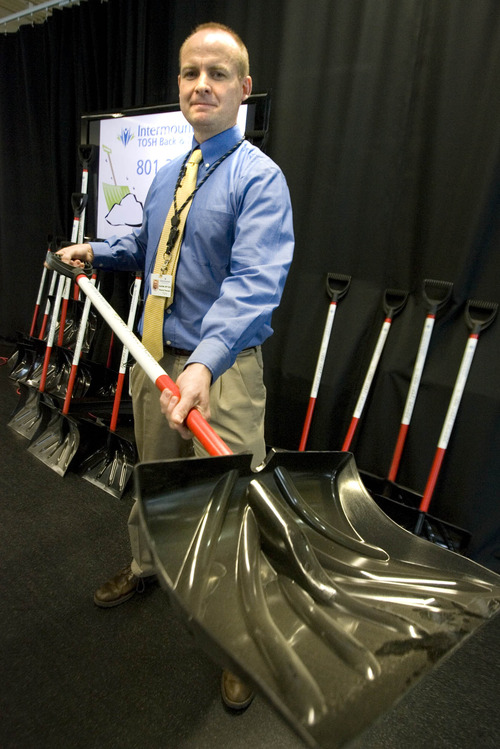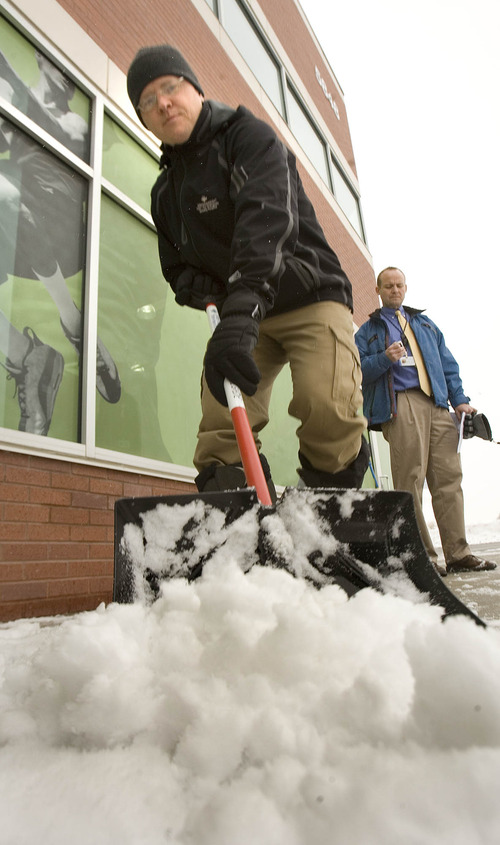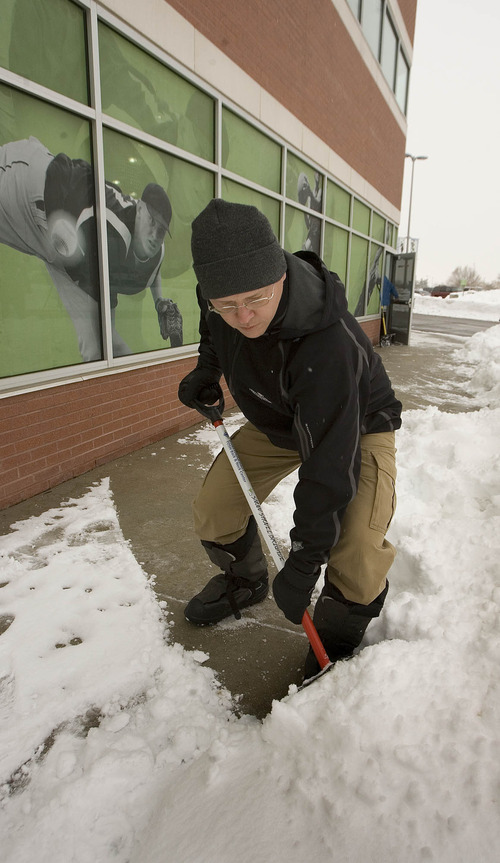This is an archived article that was published on sltrib.com in 2013, and information in the article may be outdated. It is provided only for personal research purposes and may not be reprinted.
The Orthopedic Specialty Hospital (TOSH) on Wednesday launched a good Samaritan campaign to encourage residents to shovel their frail or injury-prone neighbors' driveways and walkways.
To get a free shovel, 100 do-gooders signed pledges on Wednesday to become part of the TOSH Shovel Brigade. The hospital will give away another 150 on Thursday starting at 9 a.m.
"All of us have neighbors who could use some help once in a while," said Aaron Swalberg, a physical therapist at the Intermountain Healthcare facility in Murray.
The public relations campaign was spurred by a spike seen at the TOSH Back and Neck Center and TOSH Intermountain Spine Institute in injuries this winter over last.
For example, the Back & Neck Center has treated 1,800 patients this winter, a 40 percent increase over last year.
Not all of the extra injuries are due to snow shoveling, but some are, said Justin Hohl, a TOSH orthopedic surgeon.
"It's just the weather and a much bigger snow year," he said.
Nationally, 11,500 people are injured shoveling snow, most often with soft tissue injuries like low-back or shoulder pain, Swalberg said. Other injuries can include slips and falls or heart problems.
No wonder: A really heavy shovelful of snow can weigh 16 pounds, which equates to lifting 200 pounds per minute.
"That's pretty good exercise," Swalberg said.
And just like with other sports, he recommends the shoveling brigade warms up, wears the right shoes and stays hydrated. He says to avoid bending and twisting, but to instead "keep your toes with your nose."
Push the snow rather than throw it. But when throwing is necessary, tighten the core, squat with the legs apart and keep the snow and shovel as close to the body as possible.
"When you're bending and lifting heavy objects, you can get disc herniations," added Hohl. "They can lead to back and leg pain."
The University of Utah Hospital hasn't seen a spike in shovel-related injuries. But it has seen "just tons of falls" especially last week when roads and sidewalks were frozen over, said Troy Madsen, an emergency room physician.
"It's not just older people we're seeing. I've seen several people, young and healthy people who are falling," he said.
It has led to hip and spine fractures, he said. He advises preventing falls by salting the walkways and wearing boots or Yaktrax, coiled steel that grips the ice and snow.
If that doesn't work and you fall, Madsen recommends putting out an arm.
"A forearm fracture is much less painful, and the recovery is much less than a hip or a back fracture," he said.
Madsen is also seeing snow-blower related injuries, even after the machine has been turned off. He said users are trying to clear heavy wet snow, which releases tension on the blade and it slices off their fingers. Use a stick instead, he says.
If shoveling and snowblowing can be dangerous, there's only one option:
"Get a young whipper-snapper to do it," said Hohl. —
Get a free shovel
The Orthopedic Specialty Hospital's is giving away 150 snow shovels. Sign the Shovel Brigade pledge and get a free shovel to help dig out your neighbors.
When • 9 a.m. Thursday
Where • The Orthopedic Specialty Hospital, 5848 Fashion Blvd., Murray









